Protective effects of a Rhodiola crenulata extract and salidroside on hippocampal neurogenesis against streptozotocin-induced neural injury in the rat
- PMID: 22235318
- PMCID: PMC3250459
- DOI: 10.1371/journal.pone.0029641
Protective effects of a Rhodiola crenulata extract and salidroside on hippocampal neurogenesis against streptozotocin-induced neural injury in the rat
Abstract
Previously we have demonstrated that a Rhodiola crenulata extract (RCE), containing a potent antioxidant salidroside, promotes neurogenesis in the hippocampus of depressive rats. The current study was designed to further investigate the protective effect of the RCE on neurogenesis in a rat model of Alzheimer's disease (AD) induced by an intracerebroventricular injection of streptozotocin (STZ), and to determine whether this neuroprotective effect is induced by the antioxidative activity of salidroside. Our results showed that pretreatment with the RCE significantly improved the impaired neurogenesis and simultaneously reduced the oxidative stress in the hippocampus of AD rats. In vitro studies revealed that (1) exposure of neural stem cells (NSCs) from the hippocampus to STZ strikingly increased intracellular reactive oxygen species (ROS) levels, induced cell death and perturbed cell proliferation and differentiation, (2) hydrogen peroxide induced similar cellular activities as STZ, (3) pre-incubation of STZ-treated NSCs with catalase, an antioxidant, suppressed all these cellular activities induced by STZ, and (4) likewise, pre-incubation of STZ-treated NSCs with salidroside, also an antioxidant, suppressed all these activities as catalase: reduction of ROS levels and NSC death with simultaneous increases in proliferation and differentiation. Our findings indicated that the RCE improved the impaired hippocampal neurogenesis in the rat model of AD through protecting NSCs by its main ingredient salidroside which scavenged intracellular ROS.
Conflict of interest statement
Figures
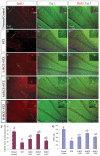



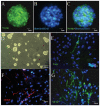

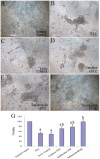
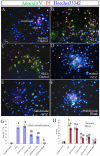



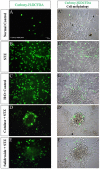
Similar articles
-
Neuroprotective effects of a Rhodiola crenulata extract on amyloid-β peptides (Aβ1-42) -induced cognitive deficits in rat models of Alzheimer's disease.Phytomedicine. 2019 Apr;57:331-338. doi: 10.1016/j.phymed.2018.12.042. Epub 2018 Dec 31. Phytomedicine. 2019. PMID: 30807987
-
Protective effect of salidroside against H2O2-induced cell apoptosis in primary culture of rat hippocampal neurons.Mol Cell Biochem. 2009 Dec;332(1-2):85-93. doi: 10.1007/s11010-009-0177-3. Epub 2009 Jun 25. Mol Cell Biochem. 2009. PMID: 19554425
-
Salidroside attenuates beta amyloid-induced cognitive deficits via modulating oxidative stress and inflammatory mediators in rat hippocampus.Behav Brain Res. 2013 May 1;244:70-81. doi: 10.1016/j.bbr.2013.01.037. Epub 2013 Feb 5. Behav Brain Res. 2013. PMID: 23396166
-
Beneficial Effects of Rhodiola and Salidroside in Diabetes: Potential Role of AMP-Activated Protein Kinase.Mol Diagn Ther. 2019 Aug;23(4):489-498. doi: 10.1007/s40291-019-00402-4. Mol Diagn Ther. 2019. PMID: 31069710 Review.
-
Rhodiola rosea L. and Alzheimer's Disease: From Farm to Pharmacy.Phytother Res. 2016 Apr;30(4):532-9. doi: 10.1002/ptr.5569. Epub 2016 Jan 11. Phytother Res. 2016. PMID: 27059687 Review.
Cited by
-
Amelioration of lipid peroxidation in vivo and in vitro by Satureja khozestanica essential oil in alloxan-induced diabetic rats.J Diabetes Metab Disord. 2014 Dec 13;13(1):119. doi: 10.1186/s40200-014-0119-9. eCollection 2014. J Diabetes Metab Disord. 2014. PMID: 25551101 Free PMC article.
-
The GLCCI1/STAT3 pathway: a novel pathway involved in diabetic cognitive dysfunction and the therapeutic effect of salidroside.J Mol Histol. 2024 Oct;55(5):851-861. doi: 10.1007/s10735-024-10236-y. Epub 2024 Aug 29. J Mol Histol. 2024. PMID: 39198367
-
Oral treatment with royal jelly improves memory and presents neuroprotective effects on icv-STZ rat model of sporadic Alzheimer's disease.Heliyon. 2020 Feb 3;6(2):e03281. doi: 10.1016/j.heliyon.2020.e03281. eCollection 2020 Feb. Heliyon. 2020. PMID: 32055729 Free PMC article.
-
Protective Effect of Antioxidants on Neuronal Dysfunction and Plasticity in Huntington's Disease.Oxid Med Cell Longev. 2017;2017:3279061. doi: 10.1155/2017/3279061. Epub 2017 Jan 12. Oxid Med Cell Longev. 2017. PMID: 28168008 Free PMC article. Review.
-
Potential Roles of Glucagon-Like Peptide-1 and Its Analogues in Dementia Targeting Impaired Insulin Secretion and Neurodegeneration.Degener Neurol Neuromuscul Dis. 2022 Mar 7;12:31-59. doi: 10.2147/DNND.S247153. eCollection 2022. Degener Neurol Neuromuscul Dis. 2022. PMID: 35300067 Free PMC article. Review.
References
-
- Ziabreva I, Perry E, Perry R, Minger SL, Ekonomou A, et al. Altered neurogenesis in Alzheimer's disease. J Psychosom Res. 2006;61:311–316. - PubMed
-
- Mohapel P, Leanza G, Kokaia M, Lindvall O. Forebrain acetylcholine regulates adult hippocampal neurogenesis and learning. Neurobiol Aging. 2005;26:939–946. - PubMed
-
- Grundke-Iqbal I, Tatebayashi Y, Li L, Haque N, Iqbal K. Abnormalities in neurogenesis in Alzheimer disease. Neurobiol Aging. 2002;23:S563–S563.
Publication types
MeSH terms
Substances
LinkOut - more resources
Full Text Sources

